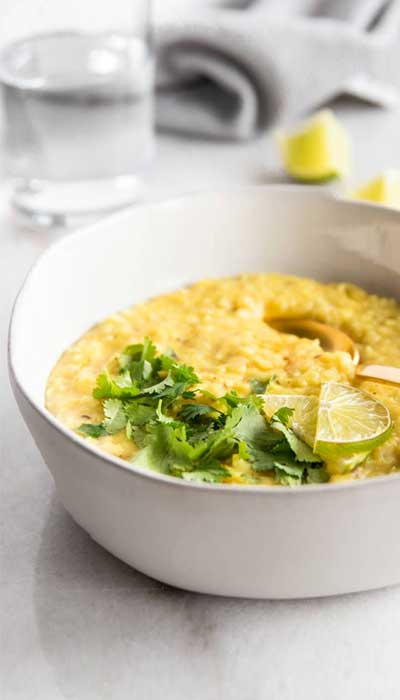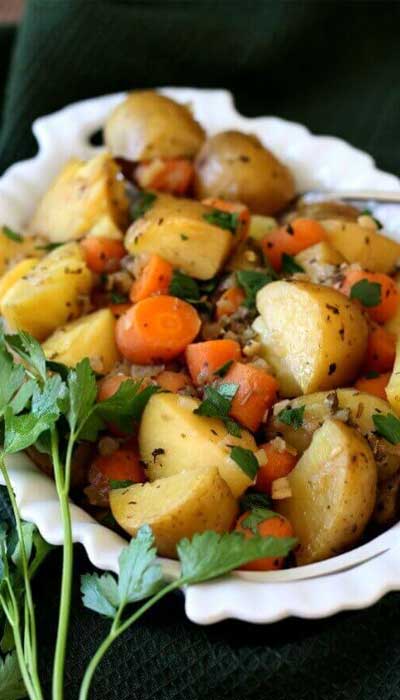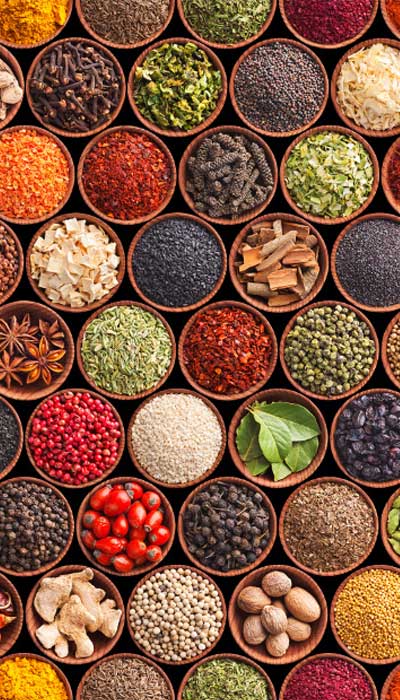BALANCING VATA: The Leader of all Doshas
 Do you in general want to hop starting with one thing then onto the next without finishing the earlier errand? Are you distracted more often & easily yet very creative? If yes, then most likely you are a Vata dominant personality mostly philosopher or artist or creator and visionary!.
Do you in general want to hop starting with one thing then onto the next without finishing the earlier errand? Are you distracted more often & easily yet very creative? If yes, then most likely you are a Vata dominant personality mostly philosopher or artist or creator and visionary!.
Vata, a mixture of elements air & ether is the principle behind all movement and force that generates thoughts & creativity. One tends to always be on the go, with an energetic mind. As long as Vata is in balance, one will be lively, a dreamer full of ideas and enthusiastic with a lean body.
Vata acts as the initiator and activator dosha characterised by its instability,creativity, feeling cold more often, irregular activity schedule, quickness in making decisions, feeling of fear and nervousness before starting a new task. Each one of these qualities is impacted by Vata dosha. Sound familiar with your current mood set? Possibly you’re having Vata dosha dominance in your body constitution.
SO WHAT ACTUALLY IS VATA DOSHA?
The root importance of the term vata suggests –
“Tatra vaa gati gandhanayor iti vata”
This means that every movement in the body is governed by vata. Vata is the principle that controls mobility, it regulates all the activities in the body both mental and psychological. From the blinking of the eyes to the beating of the heart, everything is controlled by Vata. Just like the clouds move from one place to another being carried by the winds, the other elements of the body move from one place to the other in the body only when carried by Vata.
Among the three doshas, vata is the co-ordinator and mover. In Sanskrit, the term vata derives from the verb ‘va’, meaning to move or carry. When transport’s required, vata springs into action. Because of vata, all prana, breath, food, water, blood, hormones, lymph, wastes, thoughts, speech, emotions, sensory impressions and expressions, and all nerve impulses move. In its natural arena, vata’s ‘wind’ (air moving inside ether) facilitates every metabolic interaction, correspondences, driving forces, rhythms, and cycles through time.
| Physical Attributes of Vata Dominance | Mental Attributes of Balanced Vata Dominance |
|
|
WHERE VATA DOMINATES?
The primary home of vata is the colon. Other significant areas incorporate;
- Ears (and sense of hearing)
- Skin (feeling of touch)
- Bones
- Sensory tissues including the mind.
These areas are prime locations to give indications of vata imbalance nature like dry and hard stools, popping or ringing ears, balance issues, commotion affectability; dry, broken, harsh skin; anxiety issues, nervousness and stress.
From stress to an unhealthy eating regimen, from curbed feelings to an inert way of life, anything can put Vata out of equilibrium. Now and then dosha levels vacillate normally all through our lifetime. A portion of the fundamental driver of vata dosha imbalance include:
- Certain prescriptions
- Eating issues
- Stress
- Injury or trauma
- Chemotherapy
- Tumours (malignant or benign)
- Congenital conditions
SIGNS & SYMPTOMS OF VATA IMBALANCE
If the elements of air or ether are strong, Vata dosha dominates, as do its primary qualities of dryness, lightness and coldness. Those born with a dominance of vata’s, air and ether, for example, are more prone to hyperactivity, dryness, thinness, constipation, and physical and mental mobility.
- Let us now look into the most common symptoms that occur due to Vata imbalances:
- A sluggish metabolism resulting in an urge to sleep and rest more.
- Sudden weight changes either gain or loss
- Fatigue, muscle weakness, tenderness
- Joints are always popping with sound, stiff muscles.
- Urge to eat more and heavier food, much more than the physical activity/need, thereby increasing our digestive fire strength. Resulting in digestive issues like bloating, belching, constipation, flatulence, etc.
- Have disturbed & irregular sleep pattern and have cold hands most often
- Skin problems like cold cracked and dry skin due to difference in temperature on the surface of the body and core of the body.
- Dry, scanty, curly hairs, more prone to hair fall and split ends
- Craves sweets, sour and salty foods.
- Nervous, lack of willpower, anxious, depression, variation in heart rate
- Menstrual problems with excessive pain, cramps or bleeding patterns.
- A surge in immunity-related diseases.
WHY THERE IS NEED TO BALANCE VATA DOSHA?
Early amendments of dosha imbalance can help stop any ailment before it thrives. When minor problems go unaddressed conditions deepen and spread it becomes difficult to control the manifestation of the disorder. So attempts to heal the physical body while ignoring its elemental and dosha mix are bound for a degree of failure. Beginning to work with the metabolic nature (rather than so often against it), supports every aspect of life.
Anticipation and prevention are superior to the cure and this is the thing that Ayurveda has confidence in. To keep the body from going into any sort of imbalance in nature, Ayurveda exhorts Dinacharya (day by day routine), Ritucharya (season-wise routine), Ahara Vichara (diet routine) and Sadvritta (social routine). These regimens take into consideration the season, the country, the time of the day and the body type of the individual, thereby all the regimens become personalized. Alongside the regimens, Ayurveda additionally prescribes customary purifying or purificatory medicines with the goal that poisons, ama (free toxins) and so forth which get amassed in the body purposely or accidentally. Elimination of toxins and ama is necessary both for the prevention and curing of any imbalance in the body.
A. DIETARY GUIDELINES
When the doshas are healthy, balanced, the body & mind are also healthy and balanced. But when the doshas go off, the body and mind also go haywire. Follow the following guidelines for happy Vata;
1. Eat warm, oily food
- Devour all the more sweet, salty, and sour food varieties and cut off the utilization of pungent, bitter and astringent food sources.
- Consume more natural grains like barley, corn, millet, buckwheat, rye and cooked rice, wheat, and oats every day.
- Include sweet natural products like bananas, avocados, mangoes, plums, berries, melons, papaya, peaches, cherries and nectarines in the diet.
- Maintain a strategic distance from dried and unripe organic products, just as apples, cranberries, pears, and pomegranates.
- Have more cooked vegetables, utilizing olive oil or clarified butter/ghee, like asparagus, beets, green beans, yams, turnips, broccoli, cauliflower, zucchini, and carrots.
- Use flavours and herbal spices like cardamom, cumin, ginger, salt, cloves, mustard seed, cinnamon, basil, cilantro, fennel, oregano, thyme, and dark pepper, yet stay away from harsh & bitter spices and flavors like coriander, parsley, raw turmeric.
- Try not to eat beans as this can bother the stomach with bloating and acidity issues. On the off chance that you should eat beans, have chickpeas, mung beans, pink lentils, and soybeans (like tofu).
- If you have a non-vegetarian diet, have organic chicken, turkey, seafood, and eggs, and reduce the intake of red meat.
2. Prefer Warm to Cold
- Cooked foods, served hot or warm, is ideal for nourishing vata.
- Good healthy warm soups, hot oats, rice pudding and healthy drinks, for example, nut milk or warm milk are amazing “comfort” food varieties.
- Foods with a cooling essence, like cold and frozen foods or carbonated drinks, raw foods and even leftovers that have been refrigerated can aggravate Vata, suggesting to avoid them strictly and even if they are served, have them warm.
3. Prefer Moist & Oily to Dry
- Balance the dry nature of Vata with food varieties like oils and ghee.
- Drink a lot of hydrating liquids, soups and stews consistently served hot or warm, never cooler than room temperature.
- Moist foods like berries, melons, summer squash, zucchini and yoghurt will counter Vata’s dryness.
- Slick & oily food varieties will counter-balance Vata dosha so favour food sources like avocado, coconut, olives, buttermilk, cheddar, eggs, whole milk (ideally non-homogenized), wheat, nuts and seeds.
- Try not to consume dry food sources like popcorn, wafers, white potatoes, beans, and dried natural products.
4. Prefer Wholesome, Nourishing and Soothing to Light
- While the heaviness is a great way to counterbalance Vata’s lightness, avoid deep-fried foods that can tax delicate digestion.
- Avoid overeating since taking in a lot of food at a time can be excessively substantial and heavy to digest.
- Foods that are solid, deeply nurturing and ground like cooked grains, spiced milk, root vegetables, stewed fruits, nuts and seeds.
- Avoid instant-processed food items and cakes that can be excessively hefty for Vata dominant digestion to metabolise.
- Vata-prevailing individuals should avoid caffeine, nicotine and liquor as they have an adverse effect on the need to remain grounded and stable.
5. Prefer Smooth to Rough
- Avoid foods that have a rough texture like broccoli, cabbage, cauliflower, leafy greens and certain types of beans.
- Opt for smooth foods like bananas, rice pudding, hot cereal, hot spiced milk and soups are opted to calm Vata’s roughness.
List of Food Choices for Balancing
- Grains: Cooked rice, wheat, quinoa, oats, amaranth until tender.
- Vegetables: Cooked vegetables such as asparagus, delicate greens, carrots, peas, green beans, white daikon, zucchini, parsnips, yams.
- Fruits: Avocado, pineapple, papaya, peaches, plums, grapes, mangoes, oranges, cherries, berries, lemons, stewed apples, coconut, fresh figs, soaked raisins.
- Lentils: consume lentils in cooked form till soft like mung beans, black gram (urad), red lentil, yellow split pigeon pea (toor dal).
- Dairy: Whole milk, cream, butter, fresh yoghurt (cooked into foods), lassi, cottage cheese, paneer.
- Oils: Ghee, olive oil, sesame oil, cold-squeezed nut oils like pecan.
- Natural Herbs: Fresh ginger, coriander, curry leaves, flat-leaf parsley, holy basil, fennel, mint.
- Nuts and Seeds: Soaked and blanched almonds, cashews, walnuts, pistachios, hazelnuts, pecans, pine nuts, seeds like sesame, sunflower, pumpkin etc.
- Spices: Ajwain, dried ginger, asafetida in small quantities, fenugreek, turmeric, cumin, clove, cardamom, coriander, fennel, black pepper, basil, cinnamon, nutmeg, mustard seed, mint, rosemary, thyme, lemon, oregano, rock salt or sea salt, black salt.
- Other: Rice milk, soy milk, poppy seeds, raw honey, and tofu cooked with spices.
B. LIFESTYLE GUIDELINES
Begin your journey towards re-tuning the dosha rhythm for a healthy life with Ayurveda. Balance of doshas determines health(physical, physiological & psychological).
Do you ever feel like each time you build up another daily practice or set up another timetable the carpet gets torn making you just miss the regime for yet another day?
- Get a kick-start of the day: Start your morning with warm ginger-lemon water, sweetened with honey (make sure you don’t heat the honey). Sip on warm water throughout the day, avoid gulping it down right before, during or after having meals though.
- Choose for joy/ utsaha rather than being in anxiety: Focus on what you can control, eat on a regular schedule and go to bed and wake up on a regular schedule. Establish and focus on those things.
- Avoid fasting: Going on extreme diets or fasting where the food is completely devoid of good fats leads to dryness in the system causing disruption in the functions of the nervous & endocrine systems.
- Be active: Regular exercise of one’s favourite kind with lots of breathing exercises to provide adequate oxygen to the body is important for the proper functioning of the vata.
- Create a routine: Vata is balanced by solid routines that are the opposite of its own qualities, so stability, groundedness, warmth.
- Be planned: Vata is soothed by knowing what to expect when.
Pamper your body: Make a self-massage routine with sesame oil and listen to a guided meditation before bed.
C. HOME REMEDIES
- Take 1 to 2 Haritaki tablets once or twice daily with warm water.
- Practice nasya by adding 3-4 drops of sesame oil to each nostril.
- Include Vata balancing Ayurvedic recipes that are light and easy to digest in the dietary menu. Eating any light food does not allow one to eat it in abundance. There is a limit to every kind of meal that one eats. Eat until the hunger is satisfied. One medium sized bowl is sufficient to satisfy the hunger. Here are some recipes for your kitchenette menu such as;
BUTTERNUT SQUASH SOUP
Nutritional facts: Butternut squash is a superfood, perfect for heart health and balancing vata dosha effectively.
Cooking time: 15 minutes
Ingredients:
250 gm Peeled and chopped butternut squash chunks
1 tsp cumin seeds
1 tsp coarsely grounded fennel seeds
1 tsp finely chopped coriander
Rock salt as required
150ml water
Recipe:
Heat 1 tsp of clarified butter or ghee in a pressure cooker or vessel.
Add 1 tsp cumin seeds and roast a little bit. Then add chopped butternut squash chunks into it.
Saute them for a minute and add water to it.
Then add grounded fennel seeds and rock salt as per taste.
Close the lid till one whistle and keep it on low flame for five more minutes.
Blend it with a blender upto the required consistency. Garnish with finely grated coriander and Vata balancing spice mix (Check for the recipe at the end).

KHICHDI
Nutritional facts: Kitchari is a rich source of fiber and is light & easy to digest.
Cooking time: 20-30 minutes
Ingredients:
1 cup Rice
½ cup chopped carrot
½ cup chopped potatoes
½ cup soaked Yellow lentils ( Soaked mung dal)
1 tbsp clarified butter/ ghee
1 tsp cumin seeds
Salt according to taste
Recipe:
Put 1 tbsp of clarified butter in the pressure cooker and heat it a little.
Add 1 tsp of cumin seeds to it.
Then add chopped vegetables to it and saute it for a while.
Add washed rice to it. Let it mix up thoroughly.
Then add 4 cups of water. Close the lid of the cooker or vessel and keep it on less flame for 10 minutes after one whistle.
At last, garnish it with fresh coriander leaves or you can use the Vata balancing spice mix (Check for the recipe at the end).

Nutritional facts: Great source of fiber and very helpful in maintaining digestive disturbances like bloating, constipation, etc.
Cooking time: 20 minutes
Ingredients:
½ cup Sweet potato boiled, peeled and diced into small cubes
½ cup boiled & tender carrots, chopped
1 tbsp clarified butter/ ghee or virgin olive oil
¼ tsp roasted and coarsely grounded cumins
1 pinch fresh ground black pepper
Rock salt to taste
1 tsp chopped fresh cilantro
Recipe:
Whisk together the sweet potato and carrot chunks with the melted clarified butter or virgin olive oil, lemon juice, cumin, pepper and salt in a bowl. Mix well.
Serve a medium size bowl at room temperature.

AYURVEDA VATA BALANCING SPICE MIX
Try this exemplary spice mix formula, which is incredible to taste from your favourite meal, so you get a pleasant dose of warmth.
Ingredients:
2 tsp fennel seeds
2 tsp cumin seeds
2 tsp coriander seeds
½ tsp carom seeds
½ tsp asafoetida powder
1 tsp Dry ginger powder
2 tsp jaggery powder
1 tsp black salt
How to use:
In a medium size wok or vessel, dry roast the herbs (except jaggery and salt) and spices. Take care not to blacken or burn the spices. Allow the spices to cool and with the help of a mixer/ grinder, powder them fine. Add jaggery and salt at the end. Use this Vata balancing spice-mix either in your vegetable soups , kitchari, stews or dressing over the salads.
According to Ayurveda, our human body is made up of the same five elements as the nature around us which combine in a particular combination to form the three basic humors known as the tridoshas-Vata, Pitta & Kapha. Ayurveda believes that health is nothing but the amalgamation of a balanced body, pleasant mind and a satisfied soul. Therefore Ayurveda places great importance on maintaining balance as well as re-balancing the imbalances in the doshas of the body.
Call/Direct: 905-872-1851
info@gayatriayurveda.ca
www.gayatriayurveda.ca

